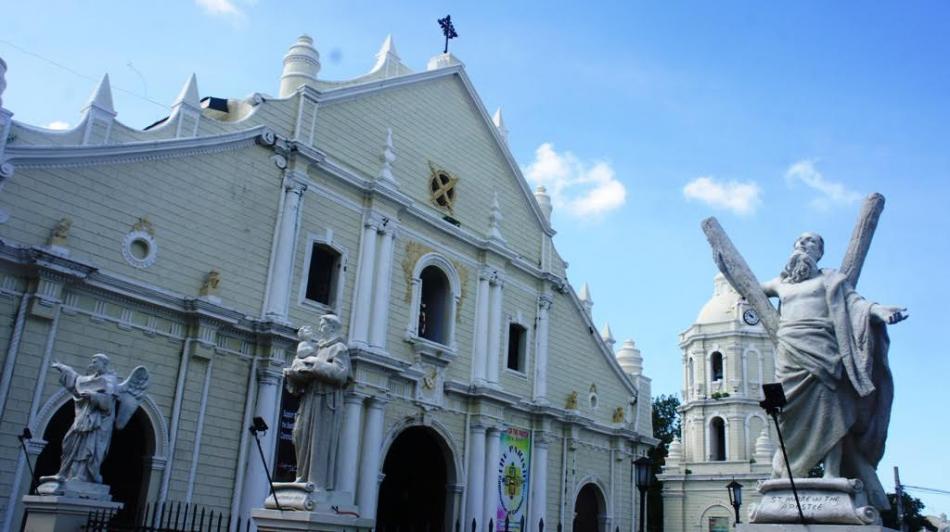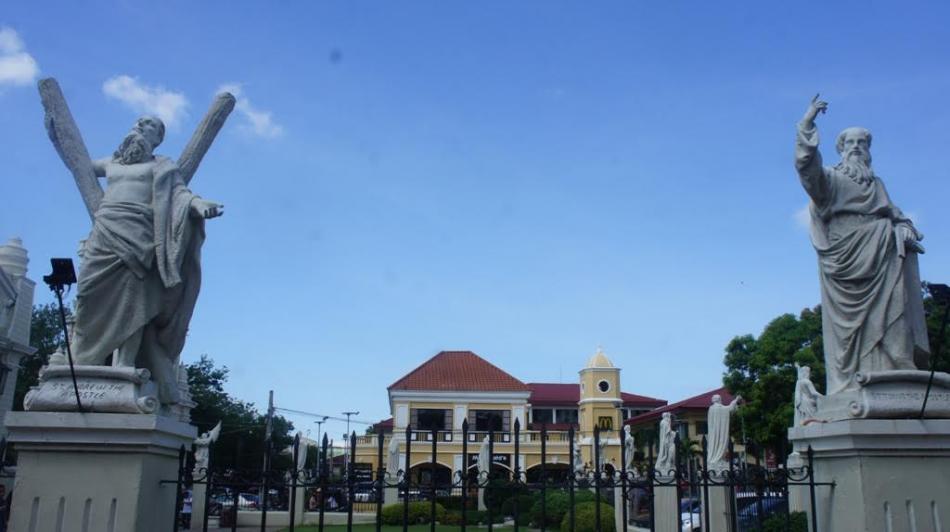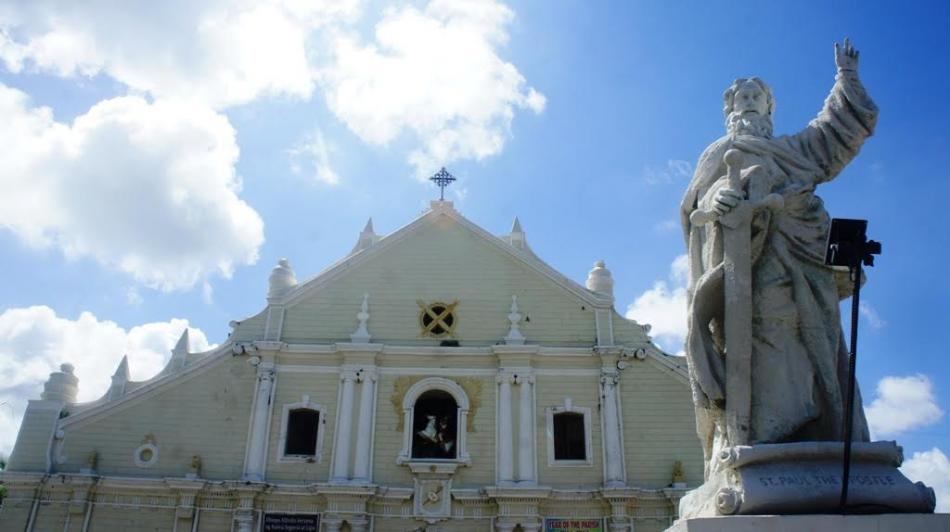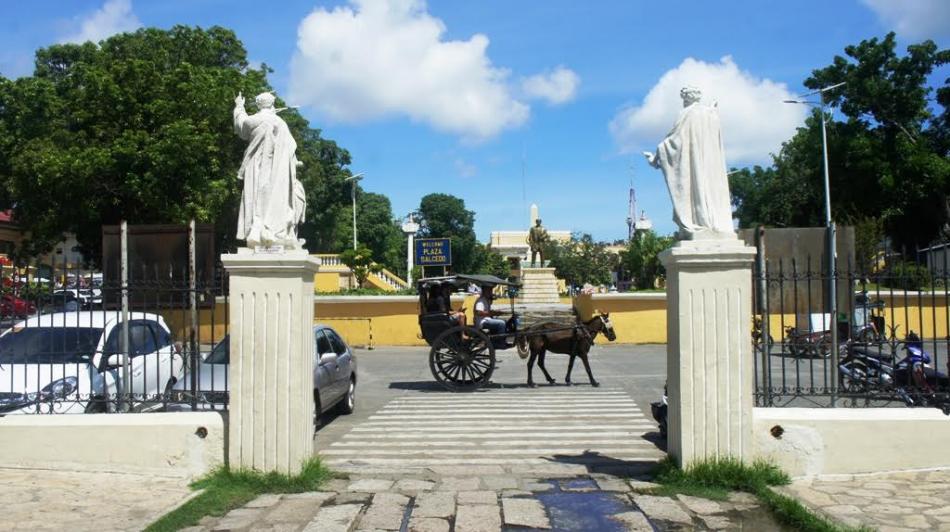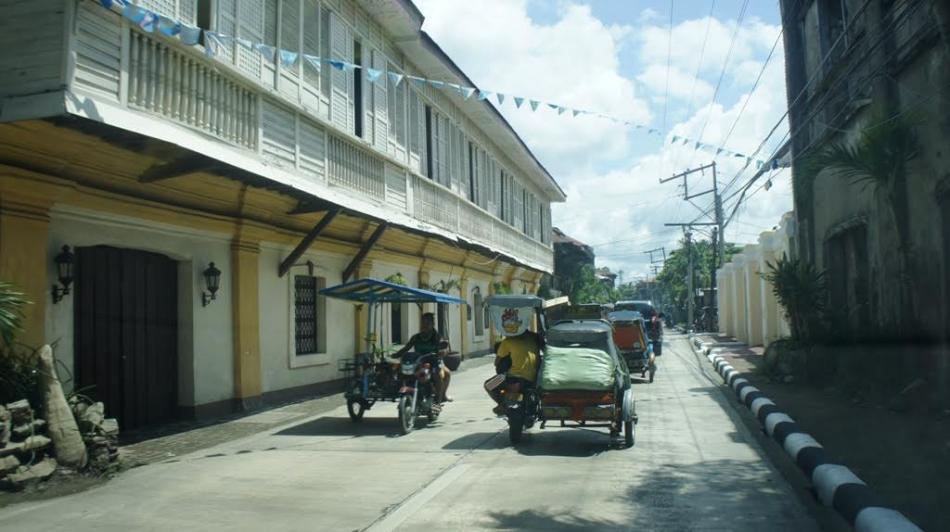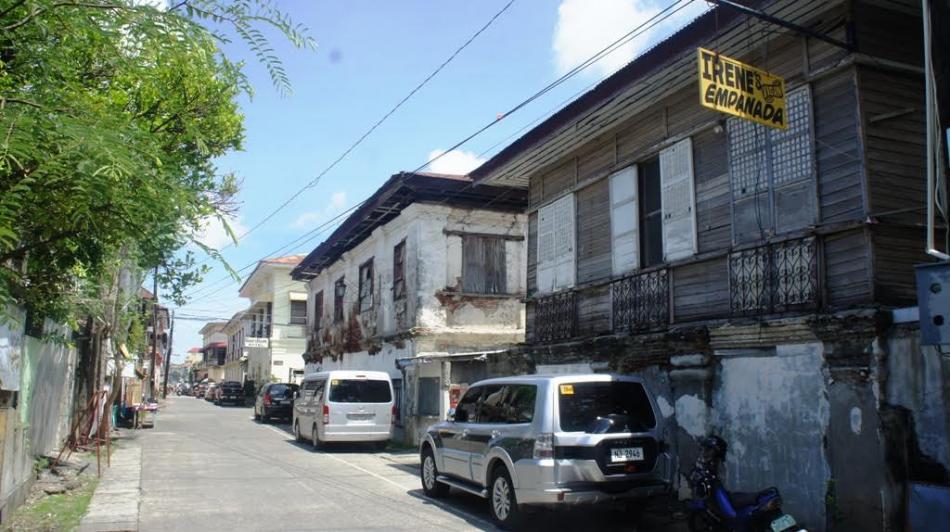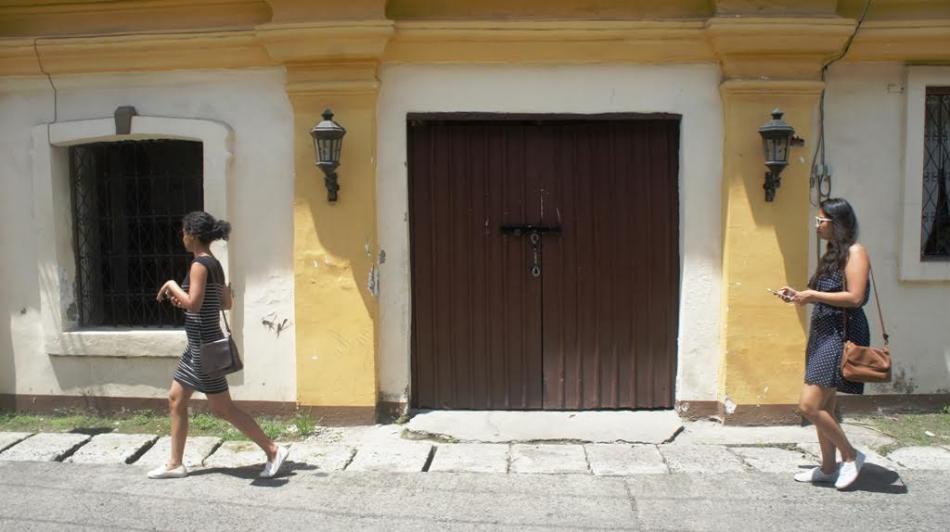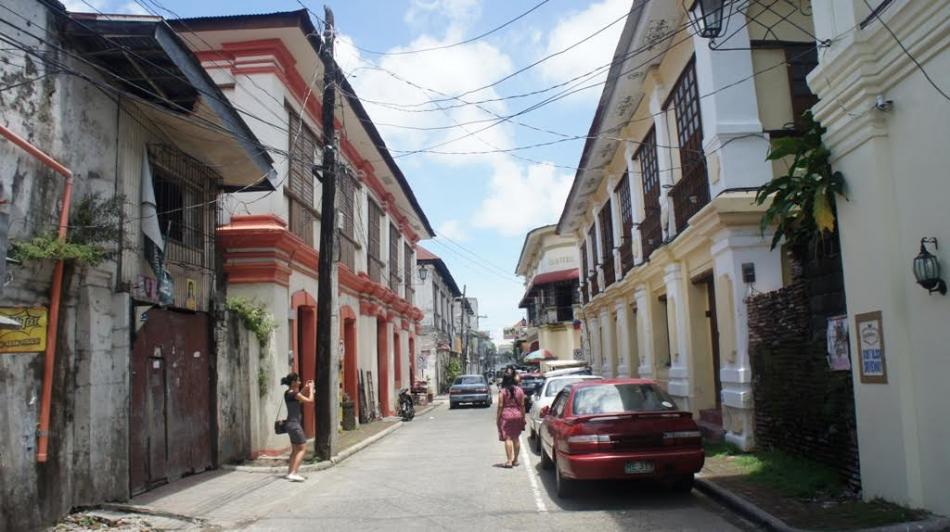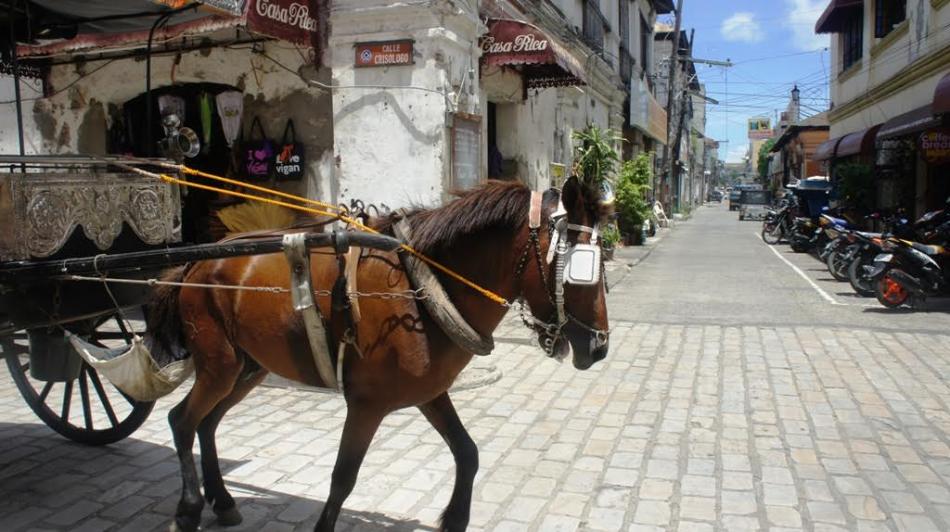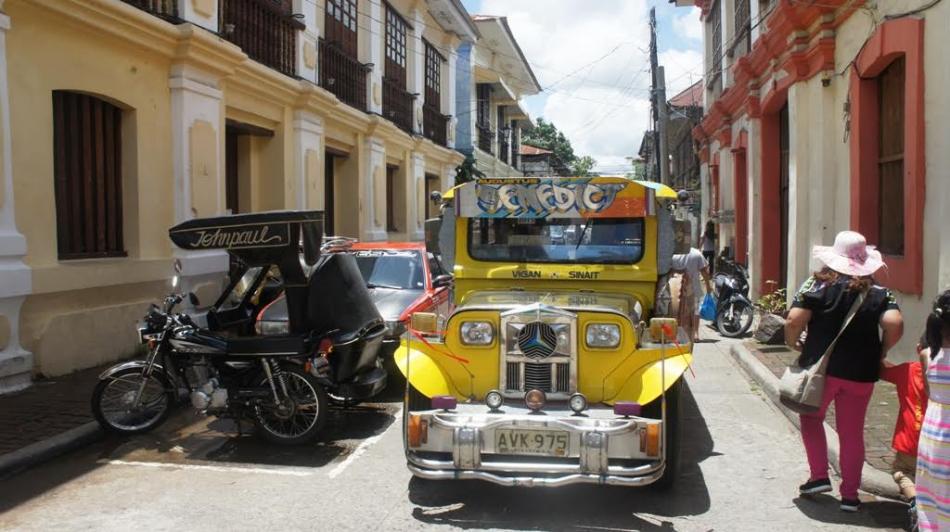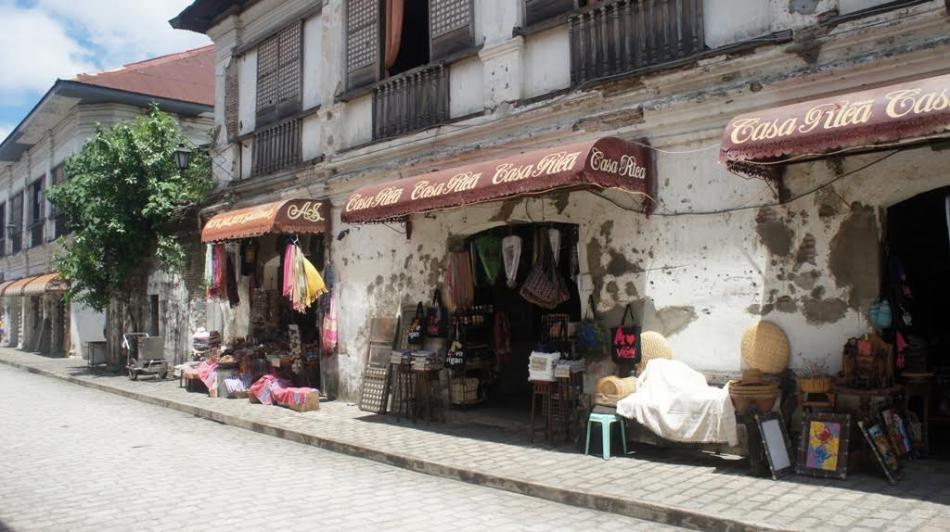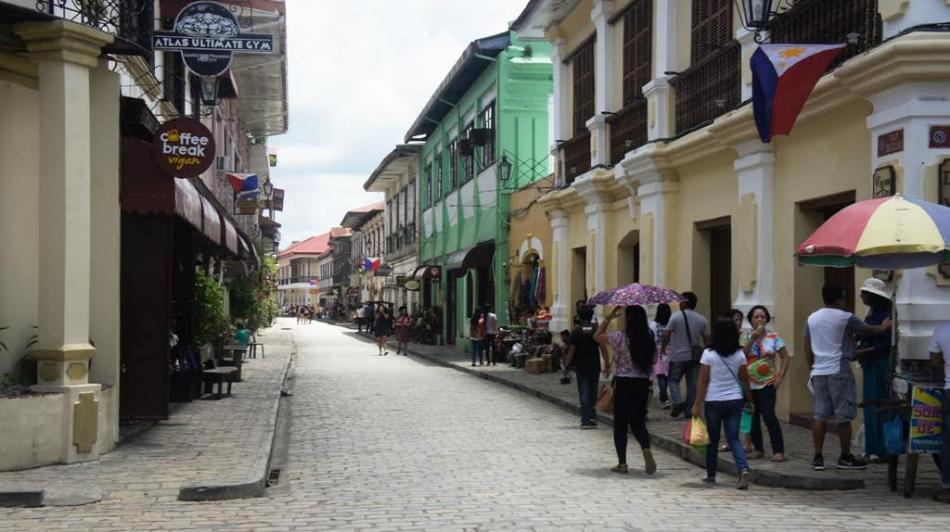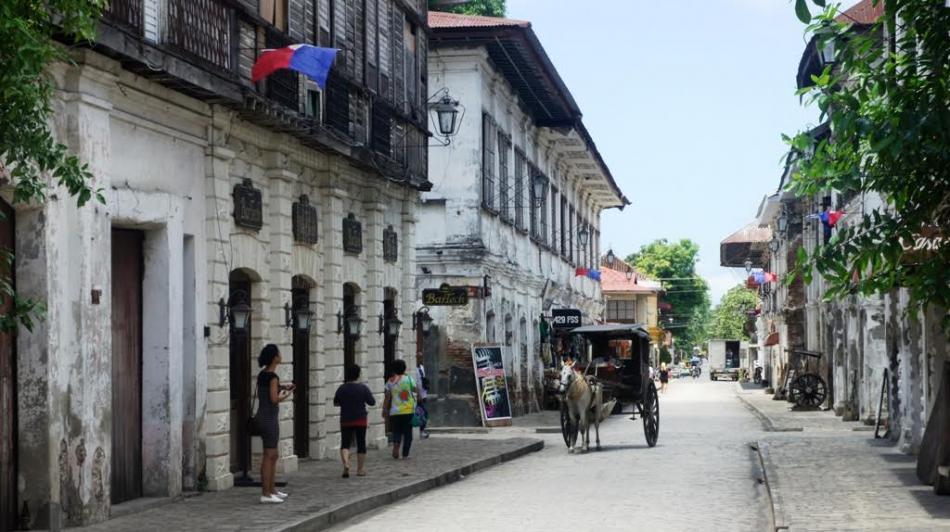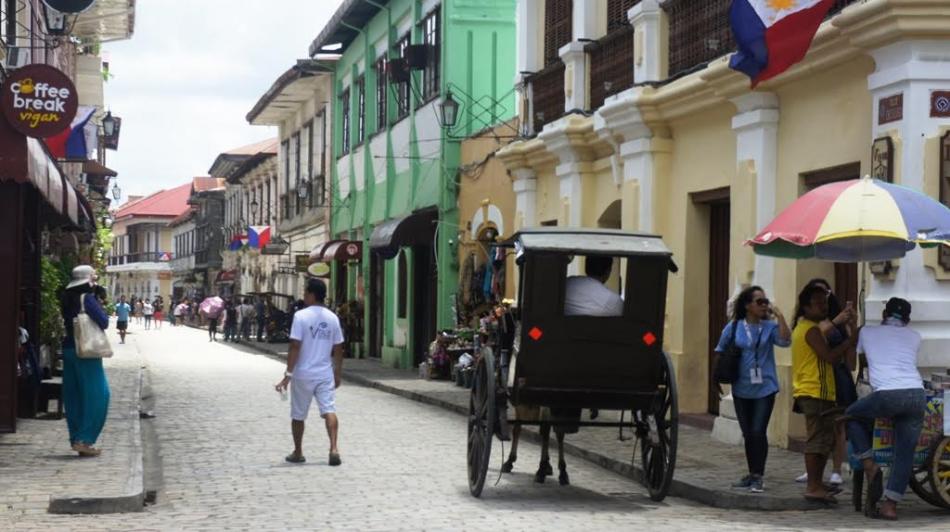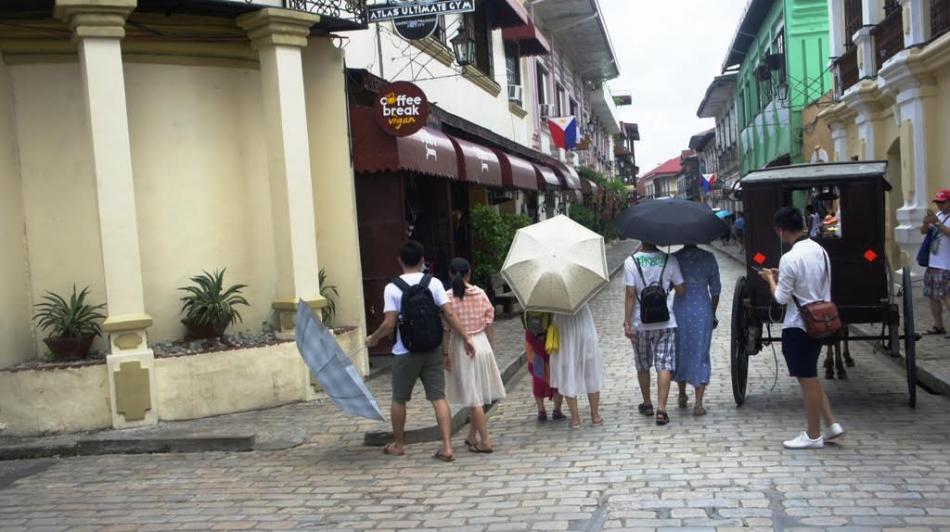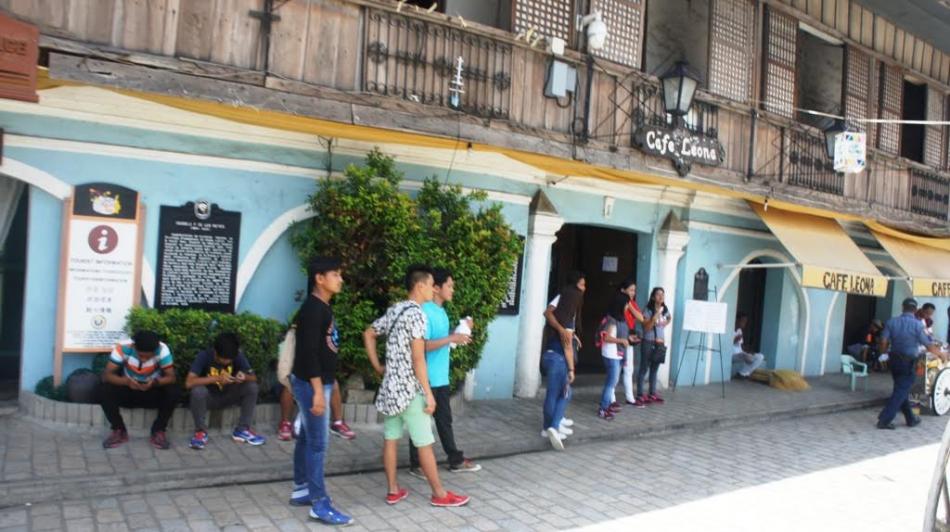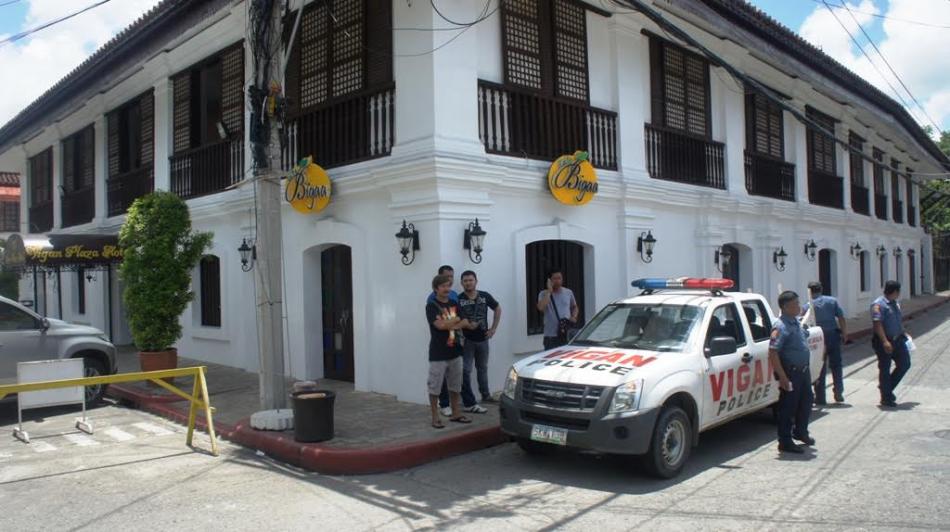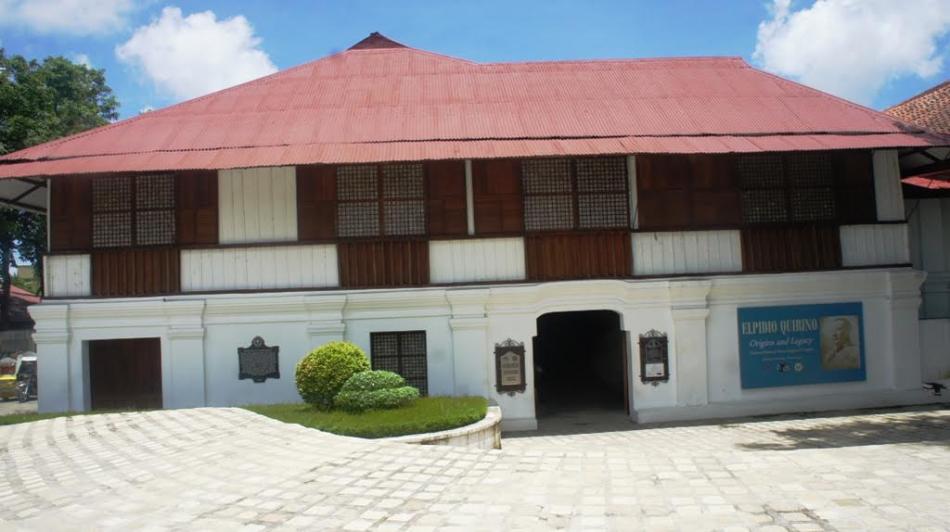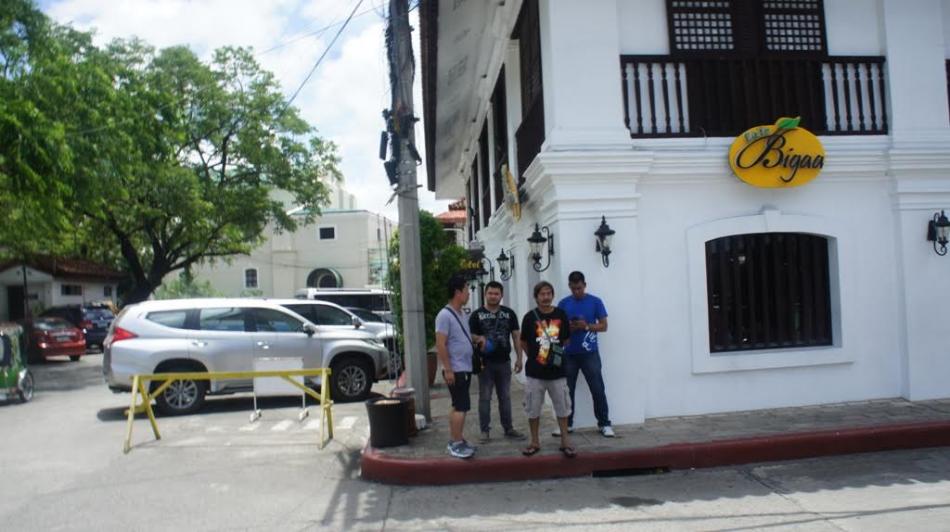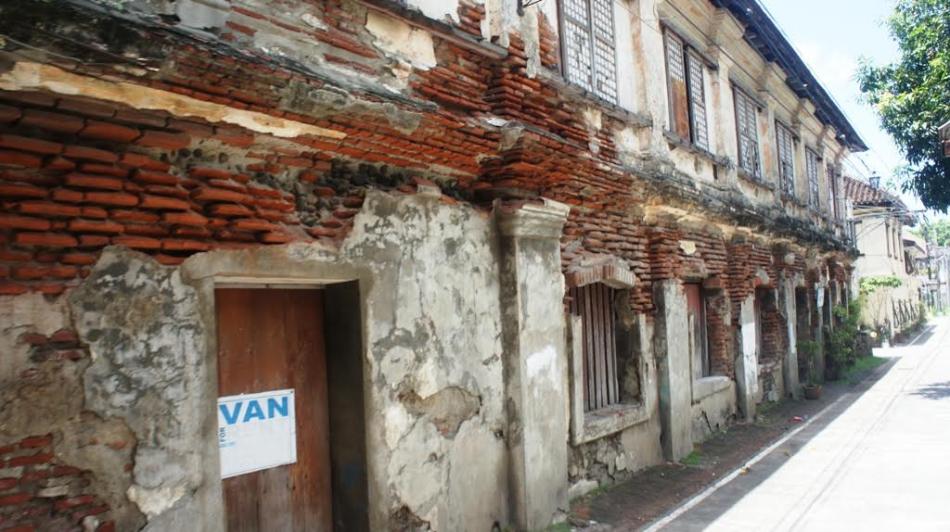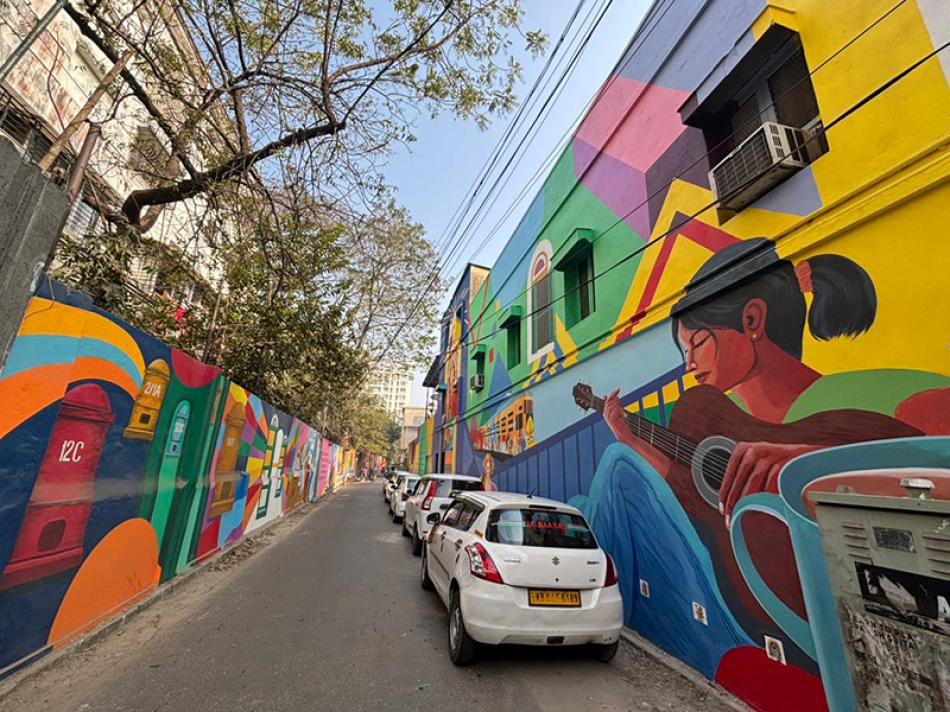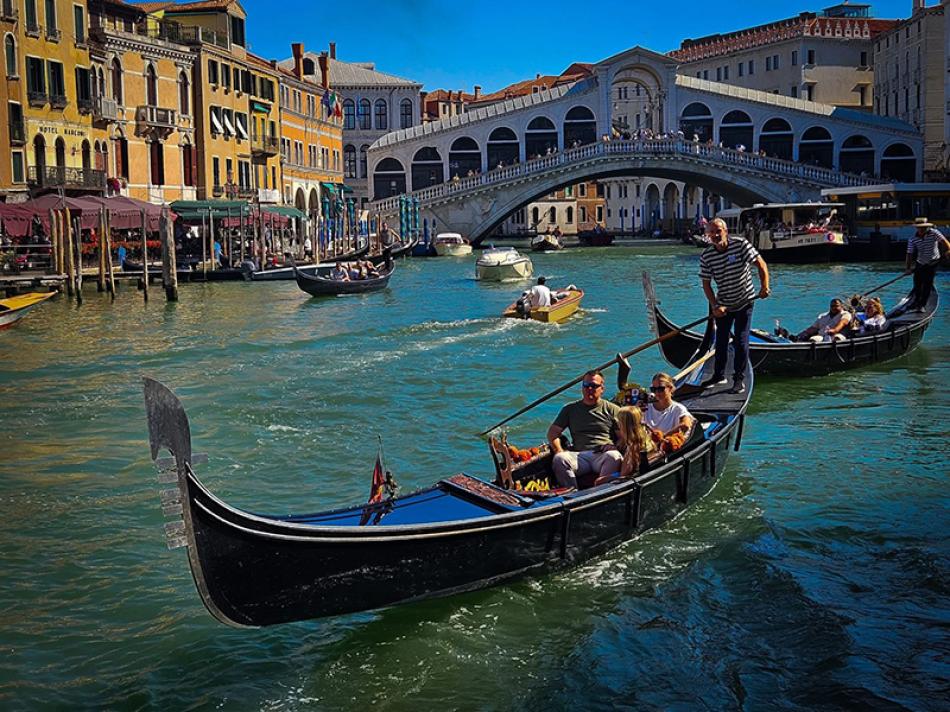Vigan City on the west coast of Luzon island in Philippines is unique among the Philippine towns because it is the country's most extensive and only surviving historic city that dates back to the 16th century Spanish colonial period. Here time indeed stands still owing to the preservation of its houses and architecture that earned it a UNESCO World Heritage site honour. Vigan was an important coastal trading post in pre-colonial times. Long before the Spanish galleons,Chinese junks sailing from the South China Sea came to Isla de Bigan through the Mestizo River that surrounded the island. With its cobblestone streets, malecon, horse-drawn carriages, cathedral and rustic mansions, Vigan is unique in today's time.
Vigan City on the west coast of Luzon island in Philippines is unique among the Philippine towns because it is the country's most extensive and only surviving historic city that dates back to the 16th century Spanish colonial period. Here time indeed stands still owing to the preservation of its houses and architecture that earned it a UNESCO World Heritage site honour. Vigan was an important coastal trading post in pre-colonial times. Long before the Spanish galleons,Chinese junks sailing from the South China Sea came to Isla de Bigan through the Mestizo River that surrounded the island. With its cobblestone streets, malecon, horse-drawn carriages, cathedral and rustic mansions, Vigan is unique in today's time.
Vigan City on the west coast of Luzon island in Philippines is unique among the Philippine towns because it is the country's most extensive and only surviving historic city that dates back to the 16th century Spanish colonial period. Here time indeed stands still owing to the preservation of its houses and architecture that earned it a UNESCO World Heritage site honour. Vigan was an important coastal trading post in pre-colonial times. Long before the Spanish galleons,Chinese junks sailing from the South China Sea came to Isla de Bigan through the Mestizo River that surrounded the island. With its cobblestone streets, malecon, horse-drawn carriages, cathedral and rustic mansions, Vigan is unique in today's time.
Vigan City on the west coast of Luzon island in Philippines is unique among the Philippine towns because it is the country's most extensive and only surviving historic city that dates back to the 16th century Spanish colonial period. Here time indeed stands still owing to the preservation of its houses and architecture that earned it a UNESCO World Heritage site honour. Vigan was an important coastal trading post in pre-colonial times. Long before the Spanish galleons,Chinese junks sailing from the South China Sea came to Isla de Bigan through the Mestizo River that surrounded the island. With its cobblestone streets, malecon, horse-drawn carriages, cathedral and rustic mansions, Vigan is unique in today's time.
Vigan City on the west coast of Luzon island in Philippines is unique among the Philippine towns because it is the country's most extensive and only surviving historic city that dates back to the 16th century Spanish colonial period. Here time indeed stands still owing to the preservation of its houses and architecture that earned it a UNESCO World Heritage site honour. Vigan was an important coastal trading post in pre-colonial times. Long before the Spanish galleons,Chinese junks sailing from the South China Sea came to Isla de Bigan through the Mestizo River that surrounded the island. With its cobblestone streets, malecon, horse-drawn carriages, cathedral and rustic mansions, Vigan is unique in today's time.
Vigan City on the west coast of Luzon island in Philippines is unique among the Philippine towns because it is the country's most extensive and only surviving historic city that dates back to the 16th century Spanish colonial period. Here time indeed stands still owing to the preservation of its houses and architecture that earned it a UNESCO World Heritage site honour. Vigan was an important coastal trading post in pre-colonial times. Long before the Spanish galleons,Chinese junks sailing from the South China Sea came to Isla de Bigan through the Mestizo River that surrounded the island. With its cobblestone streets, malecon, horse-drawn carriages, cathedral and rustic mansions, Vigan is unique in today's time.
Vigan City on the west coast of Luzon island in Philippines is unique among the Philippine towns because it is the country's most extensive and only surviving historic city that dates back to the 16th century Spanish colonial period. Here time indeed stands still owing to the preservation of its houses and architecture that earned it a UNESCO World Heritage site honour. Vigan was an important coastal trading post in pre-colonial times. Long before the Spanish galleons,Chinese junks sailing from the South China Sea came to Isla de Bigan through the Mestizo River that surrounded the island. With its cobblestone streets, malecon, horse-drawn carriages, cathedral and rustic mansions, Vigan is unique in today's time.
Vigan City on the west coast of Luzon island in Philippines is unique among the Philippine towns because it is the country's most extensive and only surviving historic city that dates back to the 16th century Spanish colonial period. Here time indeed stands still owing to the preservation of its houses and architecture that earned it a UNESCO World Heritage site honour. Vigan was an important coastal trading post in pre-colonial times. Long before the Spanish galleons,Chinese junks sailing from the South China Sea came to Isla de Bigan through the Mestizo River that surrounded the island. With its cobblestone streets, malecon, horse-drawn carriages, cathedral and rustic mansions, Vigan is unique in today's time.
Vigan City on the west coast of Luzon island in Philippines is unique among the Philippine towns because it is the country's most extensive and only surviving historic city that dates back to the 16th century Spanish colonial period. Here time indeed stands still owing to the preservation of its houses and architecture that earned it a UNESCO World Heritage site honour. Vigan was an important coastal trading post in pre-colonial times. Long before the Spanish galleons,Chinese junks sailing from the South China Sea came to Isla de Bigan through the Mestizo River that surrounded the island. With its cobblestone streets, malecon, horse-drawn carriages, cathedral and rustic mansions, Vigan is unique in today's time.
Vigan City on the west coast of Luzon island in Philippines is unique among the Philippine towns because it is the country's most extensive and only surviving historic city that dates back to the 16th century Spanish colonial period. Here time indeed stands still owing to the preservation of its houses and architecture that earned it a UNESCO World Heritage site honour. Vigan was an important coastal trading post in pre-colonial times. Long before the Spanish galleons,Chinese junks sailing from the South China Sea came to Isla de Bigan through the Mestizo River that surrounded the island. With its cobblestone streets, malecon, horse-drawn carriages, cathedral and rustic mansions, Vigan is unique in today's time.
Vigan City on the west coast of Luzon island in Philippines is unique among the Philippine towns because it is the country's most extensive and only surviving historic city that dates back to the 16th century Spanish colonial period. Here time indeed stands still owing to the preservation of its houses and architecture that earned it a UNESCO World Heritage site honour. Vigan was an important coastal trading post in pre-colonial times. Long before the Spanish galleons,Chinese junks sailing from the South China Sea came to Isla de Bigan through the Mestizo River that surrounded the island. With its cobblestone streets, malecon, horse-drawn carriages, cathedral and rustic mansions, Vigan is unique in today's time.
Vigan City on the west coast of Luzon island in Philippines is unique among the Philippine towns because it is the country's most extensive and only surviving historic city that dates back to the 16th century Spanish colonial period. Here time indeed stands still owing to the preservation of its houses and architecture that earned it a UNESCO World Heritage site honour. Vigan was an important coastal trading post in pre-colonial times. Long before the Spanish galleons,Chinese junks sailing from the South China Sea came to Isla de Bigan through the Mestizo River that surrounded the island. With its cobblestone streets, malecon, horse-drawn carriages, cathedral and rustic mansions, Vigan is unique in today's time.
Vigan City on the west coast of Luzon island in Philippines is unique among the Philippine towns because it is the country's most extensive and only surviving historic city that dates back to the 16th century Spanish colonial period. Here time indeed stands still owing to the preservation of its houses and architecture that earned it a UNESCO World Heritage site honour. Vigan was an important coastal trading post in pre-colonial times. Long before the Spanish galleons,Chinese junks sailing from the South China Sea came to Isla de Bigan through the Mestizo River that surrounded the island. With its cobblestone streets, malecon, horse-drawn carriages, cathedral and rustic mansions, Vigan is unique in today's time.
Vigan City on the west coast of Luzon island in Philippines is unique among the Philippine towns because it is the country's most extensive and only surviving historic city that dates back to the 16th century Spanish colonial period. Here time indeed stands still owing to the preservation of its houses and architecture that earned it a UNESCO World Heritage site honour. Vigan was an important coastal trading post in pre-colonial times. Long before the Spanish galleons,Chinese junks sailing from the South China Sea came to Isla de Bigan through the Mestizo River that surrounded the island. With its cobblestone streets, malecon, horse-drawn carriages, cathedral and rustic mansions, Vigan is unique in today's time.
Vigan City on the west coast of Luzon island in Philippines is unique among the Philippine towns because it is the country's most extensive and only surviving historic city that dates back to the 16th century Spanish colonial period. Here time indeed stands still owing to the preservation of its houses and architecture that earned it a UNESCO World Heritage site honour. Vigan was an important coastal trading post in pre-colonial times. Long before the Spanish galleons,Chinese junks sailing from the South China Sea came to Isla de Bigan through the Mestizo River that surrounded the island. With its cobblestone streets, malecon, horse-drawn carriages, cathedral and rustic mansions, Vigan is unique in today's time.
Vigan City on the west coast of Luzon island in Philippines is unique among the Philippine towns because it is the country's most extensive and only surviving historic city that dates back to the 16th century Spanish colonial period. Here time indeed stands still owing to the preservation of its houses and architecture that earned it a UNESCO World Heritage site honour. Vigan was an important coastal trading post in pre-colonial times. Long before the Spanish galleons,Chinese junks sailing from the South China Sea came to Isla de Bigan through the Mestizo River that surrounded the island. With its cobblestone streets, malecon, horse-drawn carriages, cathedral and rustic mansions, Vigan is unique in today's time.
Vigan City on the west coast of Luzon island in Philippines is unique among the Philippine towns because it is the country's most extensive and only surviving historic city that dates back to the 16th century Spanish colonial period. Here time indeed stands still owing to the preservation of its houses and architecture that earned it a UNESCO World Heritage site honour. Vigan was an important coastal trading post in pre-colonial times. Long before the Spanish galleons,Chinese junks sailing from the South China Sea came to Isla de Bigan through the Mestizo River that surrounded the island. With its cobblestone streets, malecon, horse-drawn carriages, cathedral and rustic mansions, Vigan is unique in today's time.
Vigan City on the west coast of Luzon island in Philippines is unique among the Philippine towns because it is the country's most extensive and only surviving historic city that dates back to the 16th century Spanish colonial period. Here time indeed stands still owing to the preservation of its houses and architecture that earned it a UNESCO World Heritage site honour. Vigan was an important coastal trading post in pre-colonial times. Long before the Spanish galleons,Chinese junks sailing from the South China Sea came to Isla de Bigan through the Mestizo River that surrounded the island. With its cobblestone streets, malecon, horse-drawn carriages, cathedral and rustic mansions, Vigan is unique in today's time.
Vigan City on the west coast of Luzon island in Philippines is unique among the Philippine towns because it is the country's most extensive and only surviving historic city that dates back to the 16th century Spanish colonial period. Here time indeed stands still owing to the preservation of its houses and architecture that earned it a UNESCO World Heritage site honour. Vigan was an important coastal trading post in pre-colonial times. Long before the Spanish galleons,Chinese junks sailing from the South China Sea came to Isla de Bigan through the Mestizo River that surrounded the island. With its cobblestone streets, malecon, horse-drawn carriages, cathedral and rustic mansions, Vigan is unique in today's time.
Vigan City on the west coast of Luzon island in Philippines is unique among the Philippine towns because it is the country's most extensive and only surviving historic city that dates back to the 16th century Spanish colonial period. Here time indeed stands still owing to the preservation of its houses and architecture that earned it a UNESCO World Heritage site honour. Vigan was an important coastal trading post in pre-colonial times. Long before the Spanish galleons,Chinese junks sailing from the South China Sea came to Isla de Bigan through the Mestizo River that surrounded the island. With its cobblestone streets, malecon, horse-drawn carriages, cathedral and rustic mansions, Vigan is unique in today's time.
Vigan City on the west coast of Luzon island in Philippines is unique among the Philippine towns because it is the country's most extensive and only surviving historic city that dates back to the 16th century Spanish colonial period. Here time indeed stands still owing to the preservation of its houses and architecture that earned it a UNESCO World Heritage site honour. Vigan was an important coastal trading post in pre-colonial times. Long before the Spanish galleons,Chinese junks sailing from the South China Sea came to Isla de Bigan through the Mestizo River that surrounded the island. With its cobblestone streets, malecon, horse-drawn carriages, cathedral and rustic mansions, Vigan is unique in today's time.
Vigan City on the west coast of Luzon island in Philippines is unique among the Philippine towns because it is the country's most extensive and only surviving historic city that dates back to the 16th century Spanish colonial period. Here time indeed stands still owing to the preservation of its houses and architecture that earned it a UNESCO World Heritage site honour. Vigan was an important coastal trading post in pre-colonial times. Long before the Spanish galleons,Chinese junks sailing from the South China Sea came to Isla de Bigan through the Mestizo River that surrounded the island. With its cobblestone streets, malecon, horse-drawn carriages, cathedral and rustic mansions, Vigan is unique in today's time.
Vigan City on the west coast of Luzon island in Philippines is unique among the Philippine towns because it is the country's most extensive and only surviving historic city that dates back to the 16th century Spanish colonial period. Here time indeed stands still owing to the preservation of its houses and architecture that earned it a UNESCO World Heritage site honour. Vigan was an important coastal trading post in pre-colonial times. Long before the Spanish galleons,Chinese junks sailing from the South China Sea came to Isla de Bigan through the Mestizo River that surrounded the island. With its cobblestone streets, malecon, horse-drawn carriages, cathedral and rustic mansions, Vigan is unique in today's time.
